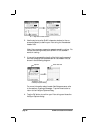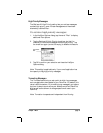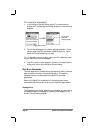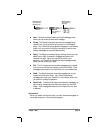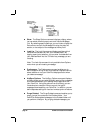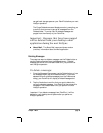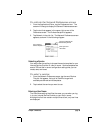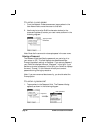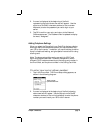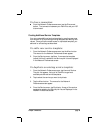
page 38 PalmPilot Professional Handbook
Chapter 2
PalmPilot
™
TCP/IP Software
Your PalmPilot 2.0 operating system comes with TCP/IP software
that enables you to connect with Internet Service Providers (ISPs)
or dial-in (remote access) servers. Because the TCP/IP software
is a feature of the operating system, you configure all parameters
relating to it from the Preferences application.
To use PalmPilot TCP/IP, you must configure the Modem
Preferences and the Network Preferences settings. When this is
complete, you can establish a PPP (Point-to-Point Protocol) or
SLIP (Serial Line Internet Protocol) connection with your ISP or
dial-in server either by using menu commands from the Network
Preferences screen or by using a third-party application.
PalmPilot TCP/IP provides the ability to connect to your ISP or
dial-in server, however, it does not come with any applications to
view the transmitted data. Third party applications that take
advantage of TCP/IP are documented on the PalmPilot website
(http://www.palmpilot.com). Check this site for details.
Configuring Network Preferences Settings
Before you can use PalmPilot TCP/IP, you must configure the
Modem Preferences and the Network Preferences settings.
Modem Preferences settings enable your PalmPilot connected
organizer to use an external modem (such as the PalmPilot
Modem) to communicate with remote devices, such as your
desktop if you are away on travel or your ISP server. For a
complete explanation on how to configure Modem Preferences
parameters, refer to the PalmPilot Handbook.
The Network Preferences settings apply specifically to TCP/IP
and are based on the concept of service templates. Service
templates are a set of ISP or dial-in server configuration settings
you can create, save, and reuse. Your PalmPilot comes with a
number of service templates already installed; available service
templates are listed in the Service pick list.



